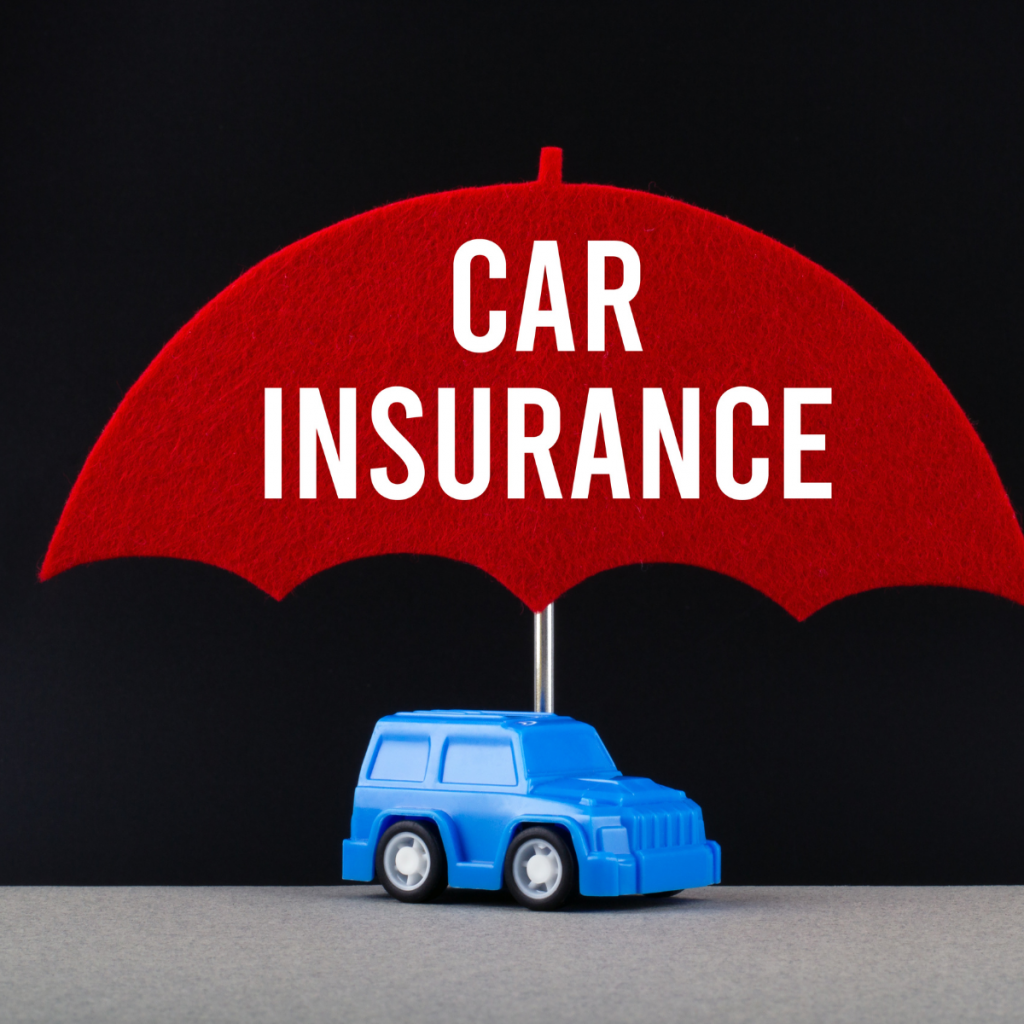Car insurance premiums can fluctuate over time, and understanding what factors influence these changes is crucial for any driver. Whether you’ve noticed an increase in your premium or are looking to manage your insurance costs effectively, several factors play a role in determining how much you pay. From changes in your driving habits to broader economic trends, insurance companies consider a wide range of elements to assess risk and calculate premiums. In this article, we’ll explore the key factors that influence your car insurance premium, helping you understand how they work and what you can do to potentially lower your costs.

Understanding Car Insurance Premiums
Before diving into the specific factors, it’s essential to understand what a car insurance premium is. Your premium is the amount you pay to an insurance provider for coverage. It’s calculated based on various risk assessments made by the insurer. These assessments are influenced by personal information, driving history, the type of car you drive, and more. Insurance companies use a combination of statistical data and risk factors to determine the likelihood that you will file a claim, which in turn influences the cost of your insurance policy.
Key Factors That Affect Your Car Insurance Premium
1. Driving History and Experience
One of the most significant factors in determining your car insurance premium is your driving history. Insurance companies want to know how safe a driver you are, and they base this on your record of past accidents, traffic violations, and claims.
- Accident History: If you’ve been involved in accidents, particularly those where you were at fault, your premium may rise. A history of accidents suggests a higher risk of future claims, which can result in increased costs.
- Traffic Violations: Moving violations such as speeding tickets, running red lights, or DUIs can signal poor driving behavior. Insurance providers typically raise premiums for drivers with a history of violations.
- Driving Experience: Younger and less experienced drivers tend to pay higher premiums because they are statistically more likely to be involved in accidents. Conversely, experienced drivers with a clean record can expect lower rates.
2. Vehicle Make and Model
The type of car you drive is another significant factor that influences your insurance premium. Certain makes and models are more expensive to insure due to factors such as repair costs, safety features, and theft rates.
- Repair Costs: Luxury cars or vehicles with expensive parts often incur higher repair costs, leading to higher premiums. Insurance companies factor in these potential repair expenses when setting premiums.
- Safety Features: Cars with advanced safety features, such as anti-lock brakes, airbags, and collision avoidance systems, may qualify for discounts on premiums. These features reduce the likelihood of serious injuries or damages in the event of an accident.
- Theft Risk: Cars that are frequently stolen, like certain luxury or sports cars, are considered higher-risk vehicles. If your vehicle is more likely to be stolen, your insurer may charge higher premiums to cover that potential risk.
3. Location and Regional Factors
Where you live plays a significant role in how much you’ll pay for car insurance. Insurance providers take into account various regional factors, such as crime rates, accident frequency, and weather conditions.
- Crime Rates: If you live in an area with high crime rates or a higher incidence of car theft, your premiums are likely to increase. The risk of your vehicle being damaged, stolen, or vandalized is higher in these areas.
- Weather Conditions: If you live in an area prone to extreme weather events, such as hurricanes, floods, or snowstorms, your premiums could be higher. Weather-related accidents and vehicle damage are more likely in these regions.
- Urban vs. Rural Areas: Generally, urban areas tend to have higher premiums than rural areas. This is because cities often have more traffic, higher accident rates, and a greater risk of theft or vandalism.
4. Coverage Limits and Deductibles
The type of coverage you choose also impacts your insurance premium. Insurance policies can be customized to offer varying levels of protection, and your coverage limits and deductibles are key factors in determining how much you’ll pay.
- Coverage Limits: If you opt for higher coverage limits (i.e., more extensive protection), your premium will likely increase. Higher limits mean the insurance company will pay more in the event of a claim, which corresponds to a higher premium.
- Deductibles: Your deductible is the amount you must pay out of pocket before your insurance coverage kicks in. Opting for a higher deductible can lower your premium, as the insurance company takes on less risk. However, if you need to make a claim, you’ll pay more upfront.
5. Credit Score
In many states, your credit score can impact your car insurance premium. Insurance companies use your credit score as an indicator of financial responsibility, and studies have shown that individuals with higher credit scores tend to file fewer claims.
- Higher Credit Score: If you have a good credit score, you’re likely to see lower insurance premiums. Insurers view you as less of a risk because you are more likely to pay your bills on time and manage financial responsibilities.
- Lower Credit Score: On the other hand, a low credit score may indicate a higher risk of filing claims. As a result, insurance companies may charge higher premiums to those with poor credit.
6. Driving Frequency and Mileage
How much you drive each year also influences your car insurance premium. The more miles you drive, the higher the risk of an accident, so insurance providers may increase your premium accordingly.
- Low Annual Mileage: If you don’t drive much, you’re considered less of a risk, and your premiums may be lower.
- High Annual Mileage: If you drive a lot, particularly in heavy traffic or hazardous conditions, your premiums could increase due to the increased likelihood of being involved in an accident.
7. Age and Gender
Age and gender can also influence your car insurance rates. Young drivers, especially teenagers and drivers under the age of 25, typically face higher premiums due to their higher risk of accidents. This is because younger drivers are statistically more likely to make errors or engage in risky driving behaviors.
- Teenagers and Young Adults: Insurance premiums tend to be higher for these age groups because they are more prone to accidents. However, as you age and gain experience, your premiums will usually decrease.
- Gender: Statistically, young male drivers are more likely to be involved in accidents than female drivers, leading to higher premiums for males. However, gender’s influence on premiums typically lessens as you get older and more experienced.
8. Policy Discounts
Many insurance providers offer discounts that can help lower your premium. These discounts may be based on various factors, such as your driving habits, safety features in your vehicle, and loyalty to the insurer.
- Safe Driving Discounts: If you have a clean driving record and maintain safe driving habits, you may qualify for discounts.
- Bundling Discounts: Insurance companies often offer discounts if you bundle multiple policies with them, such as combining car insurance with home or renters’ insurance.
- Defensive Driving Courses: Some insurers offer discounts for drivers who complete defensive driving courses, which demonstrate a commitment to safer driving practices.
9. Insurance Company and State Regulations
Each insurance company uses different methods to calculate premiums, so prices may vary depending on the insurer. Additionally, each state has its own insurance regulations, which can impact premiums.

- State Regulations: Some states require more extensive coverage, which can increase premiums. In other states, insurance requirements may be lower, leading to reduced rates.
- Insurer’s Pricing Model: Each insurance company has its own approach to pricing policies. It’s important to shop around and compare quotes from different providers to find the best deal for your specific situation.
How to Manage Your Car Insurance Premium
There are several strategies to manage your car insurance premium and ensure you’re getting the best value for your coverage.
- Shop Around: Don’t settle for the first quote you receive. Compare premiums from multiple insurance companies to find the most competitive rate.
- Increase Your Deductible: If you’re willing to take on more financial risk, consider raising your deductible to lower your monthly premium.
- Maintain a Clean Driving Record: Avoid accidents and traffic violations to keep your premiums low. Safe driving habits pay off in the long run.
- Use Discounts: Take advantage of discounts for safe driving, vehicle safety features, or bundling multiple policies.
- Review Your Coverage Regularly: Your needs change over time, so it’s essential to review your policy periodically to ensure you have the appropriate coverage and aren’t paying for unnecessary add-ons.
Conclusion
Car insurance premiums are influenced by a variety of factors, from your driving history to your location and the type of car you drive. By understanding these factors, you can make informed decisions about your policy and take steps to manage your premium. Whether you’re looking to reduce costs or find the best coverage for your needs, knowledge of what influences your premium will help you navigate the world of car insurance more effectively.

Leave a Reply